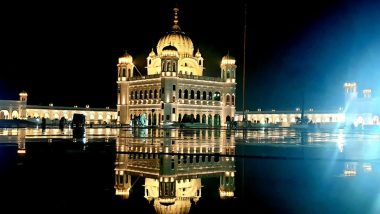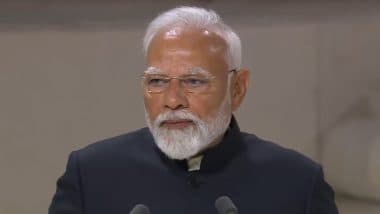The Kartarpur complex is ready to welcome the Sikh pilgrims from India to mark the 550th birth anniversary of Guru Nanak Dev - the founder of Sikhism this year. Prime Minister Narendra Modi is set to inaugurate the Kartarpur Corridor on November 9 and dispatch the first lot of pilgrims to visit Kartarpur Sahib Gurdwara in Pakistan's Punjab province. The 550th birth anniversary of Guru Nanak Dev that falls on November 12. Thousands of pilgrims from India and abroad will visit a revered shrine on the occassion. Kartarpur Corridor: India Shares List of Sikh Leaders and Dignitaries to be Part of Inaugural Jatha on November 9, Pakistan Yet to Confirm.
The Kartarpur Sahib Gurdwara, originally known as Gurdwara Darbar Sahib, is a highly revered Sikh shrine where Guru Nanak Dev spent 18 years of his life and is his final resting place. The Kartarpur Gurdwara, located some 4 km from the border with India, is believed to have been built on the site where Guru Nanak died in the 16th century. It is now linked with the 4.2 km-long Kartarpur Sahib Corridor. Kartarpur Corridor: How to Reach Dera Baba Nanak to Visit Kartarpur Sahib Gurudwara in Pakistan From Various Cities of India.
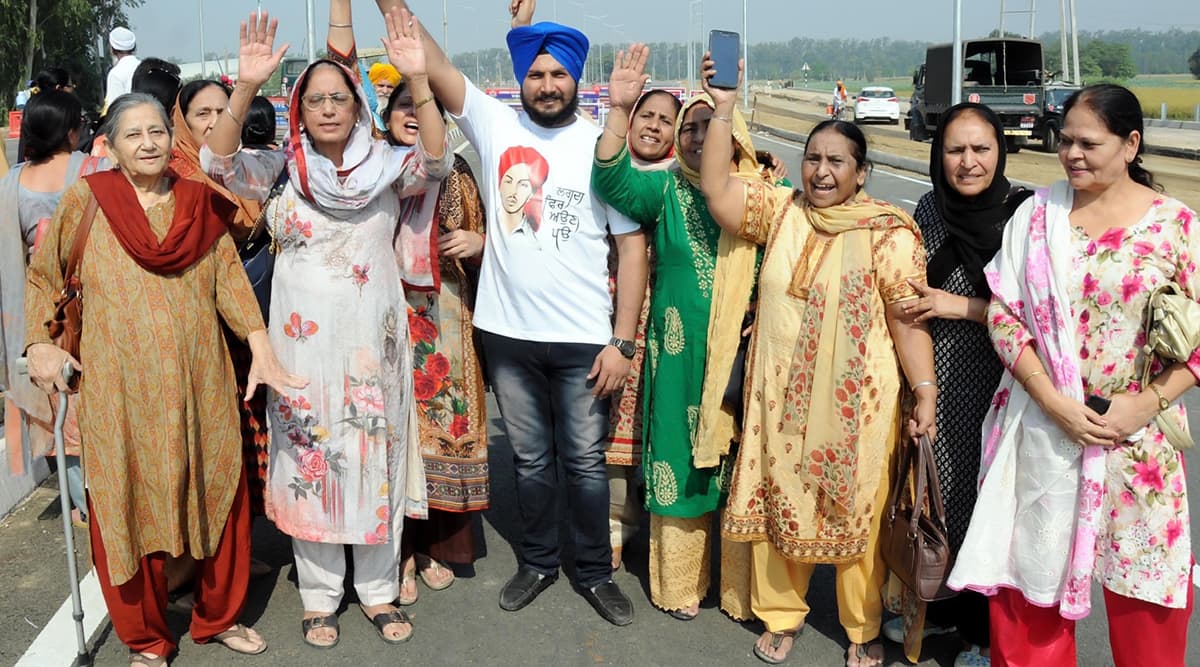
The year 2019 marks the 550th birth anniversary year of the Sikhism founder. According to reports, the devotees will visit Sikh shrines, including Nankana Sahib -- the birth place of Guru Nanak Dev in Punjab province -- Panja Sahib in Hasanabdal city and Kartarpur Sahib. Pakistan: 1,100 Indian Sikhs Reach Gurdwara Punja Sahib Ahead of Guru Nanak Dev Birth Anniversary.
The Sikh pilgrims visiting the holy shrine in Pakistan will be a part of the opening ceremony of the Kartarpur Corridor on November 9 and take part in the main function in connection with the birth anniversary of Guru Nanak Dev on November 12. They will leave for their homeland on November 14, he said.
Gurdwara Darbar Sahib Kartarpur in Pakistan
Gurdwara Darbar Sahib Kartarpur, popularly known as Kartarpur Sahib, is the world's biggest Gurdwara located in Kartarpur, Pakistan. The gurdwara is also notable for its location near the border between Pakistan and India as it was built on the historic site where Guru Nanak settled and assembled the Sikh commune after his missionary travels. The shrine is visible from the Indian side of the border and thousands of Indian Sikhs gather in large numbers to perform darshan of Guru Nanak Devji. The sacred place, which is located 5 km's from the Indo-Pakistan border, has become top tourist attraction for people visiting Pakistan.
On November 5, a total 1,303 Indian Sikh pilgrims left for Pakistan via Attari border to participate in celebrations to commemorate the 550th birth anniversary celebrations of Guru Nanak Dev. According to history, the gurdwara is also notable for its location near the border between Pakistan and India. Guru Nanakassembled a Sikh community there, and lived for 18 years until his death in 1539. The Gurdwara Darbar Sahib Kartarpur is therefore the second holiest site of the Sikh religion after Gurdwara Janam Asthan- the birth place of Guru Nanak Dev Ji located at Nankana Sahib, Pakistan.
Kartarpur Corridor

The Kartarpur Corridor is a border corridor between the two nations- India and Pakistan, connecting the Sikh shrines of Dera Baba Nanak Sahib (in Punjab, India) and Gurdwara Darbar Sahib (in Punjab, Pakistan). The corridor, which is now ready to welcome pilgrims, is intended to allow religious devotees from India to visit the Gurdwara in Kartarpur, 4.7 kilometres (2.9 miles) from the Pakistan-India border, without a visa.
The opening of Kartarpur border crossing was first discussed in 1998 during the tenure of Prime ministers Atal Bihari Vajpayee and Nawaz Sharif. After further discussions during the 1999 bus diplomacy, Pakistan renovated the Kartarpur Sahib gurdwara, making it available for viewing from the Indian border.
History of Kartarpur
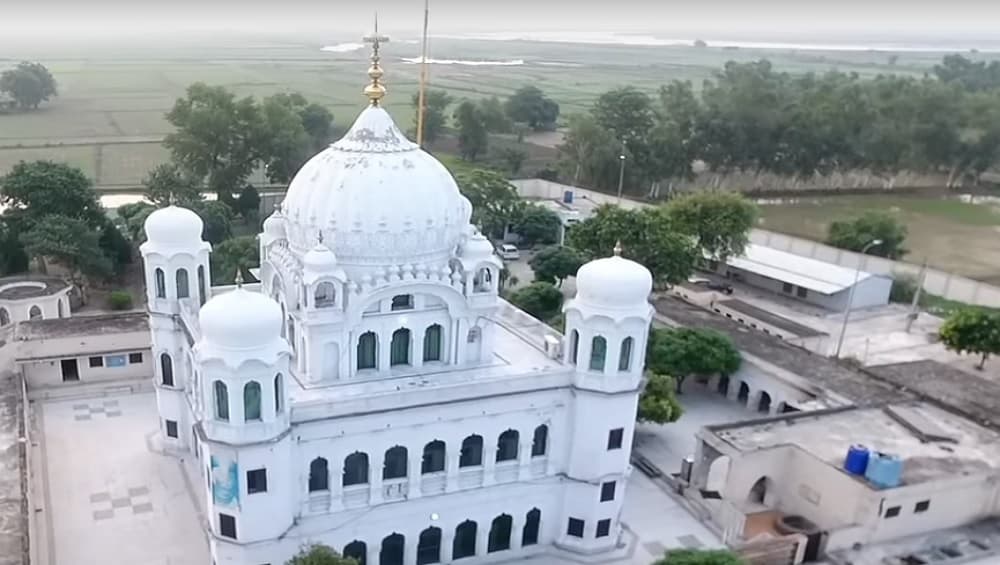
The history of Kartarpur lies back to 1504 CE. The first guru of Sikhism, Guru Nanak, founded Kartarpur on the right bank of the Ravi River and established the first Sikh commune there. After his death in 1539, Hindus and Muslims both claimed him as their own and raised mausoleums in his memory with a common wall between them. However, the changing course of the Ravi River eventually washed them. A new habitation was formed, representing the present day Dera Baba Nanak on the left bank of the Ravi river.
According to history, during the 1947 partition of India, the region was divided between India and Pakistan. After partition, Indian Sikhs were to go over to Kartarpur informally, crossing a bridge on the Ravi river which joined Dera Baba Nanak with Kartarpur Sahib. This bridge was eventually destroyed in the Indo-Pakistan war of 1965.
On November 1, Pakistan Prime Minister Imran Khan announced waiving conditions of carrying a passport for identification and prior registration for the visitors. According to reports, the Pakistan government also exempted the Indian pilgrims from paying a $20 entry fee on the day of inauguration of the corridor and Guru Nanak Dev's birthday.
In November 26, 2018, Vice President Venkaiah Naidu had laid the foundation stone of the Dera Baba Nanak - Kartarpur Sahib Corridor, which extends up to the International Border. On the same day, Pakistan Prime Minister Imran Khan had laid the foundation stone for the 4-kilometer corridor which is expected to be completed by 2019.
On November 9 this year, the much-awaited corridor will connect Darbar Sahib in Pakistan's Kartarpur with Dera Baba Nanak shrine in India's Gurdaspur district. The move would facilitate visa-free movement of Indian Sikh pilgrims, who will have to just obtain a permit to visit Kartarpur Sahib, which was established in 1522 by Guru Nanak Dev.
(The above story first appeared on LatestLY on Nov 08, 2019 07:00 PM IST. For more news and updates on politics, world, sports, entertainment and lifestyle, log on to our website latestly.com).






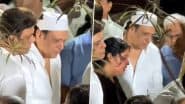






 Quickly
Quickly








